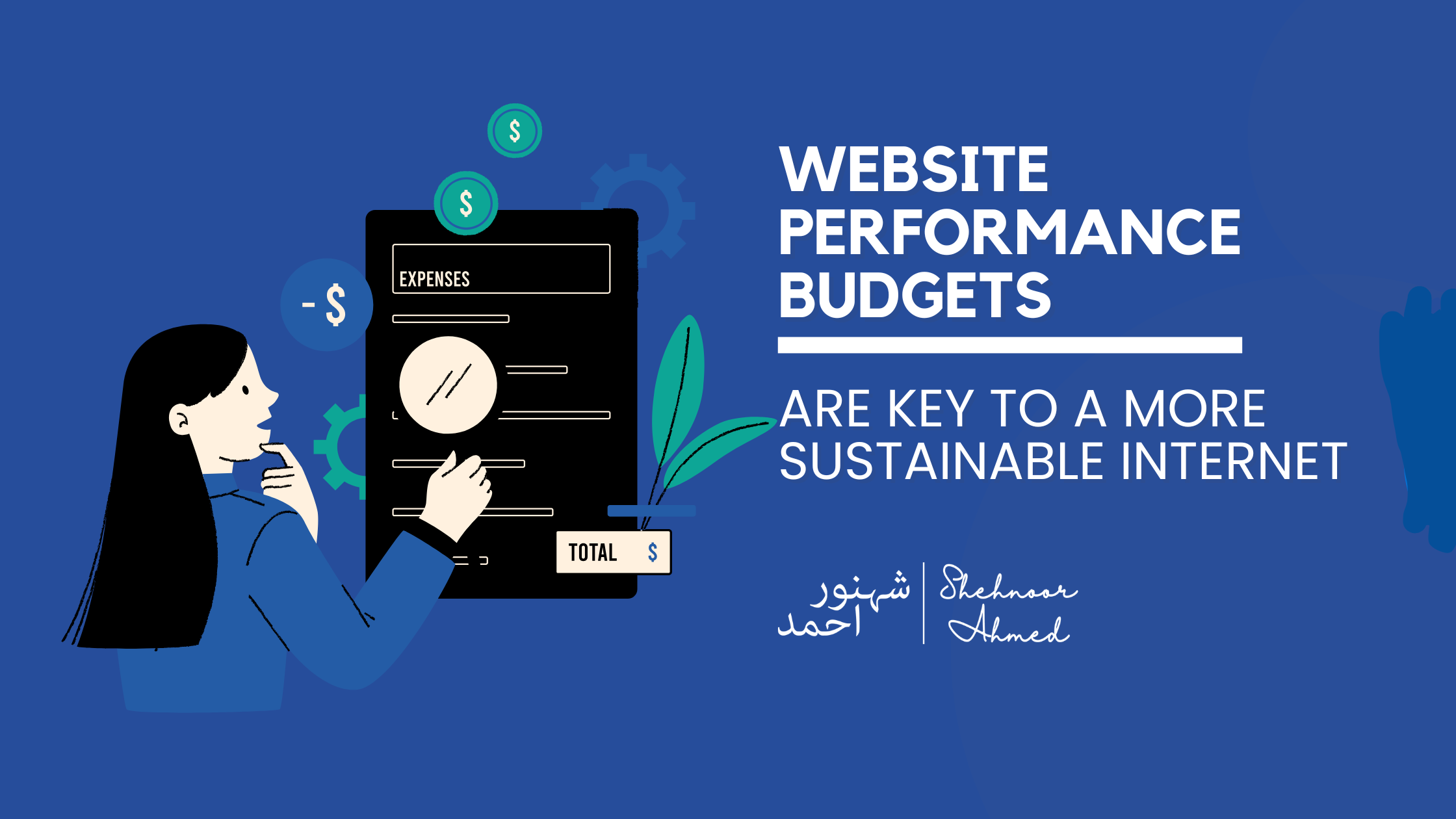Sustainability Starts with Speed
Have you ever clicked on a website only to wait… and wait? That frustrating delay isn’t just bad for user experience, it also has environmental consequences. The internet, often thought of as intangible, leaves a very real carbon footprint. Every website interaction consumes electricity, especially when bloated pages with massive images, heavy scripts, and unnecessary code are served up. That’s where website performance budgets come in.
A performance budget sets measurable constraints for a website’s performance, like page load time, asset weight, and script execution. These targets help teams make responsible design and development choices. Beyond improving load speed and user satisfaction, they also play a critical role in digital sustainability, reducing energy use and making the web greener.
What Does a Website Performance Budget Include?

Think of a performance budget as a financial plan, but for digital assets. Here’s what typically makes up a robust performance budget:
1. Page Weight Limits
Defines the total size of a page’s resources, including HTML, CSS, JavaScript, images, fonts, and videos.
2. Asset Size Targets
Sets maximum file sizes for individual assets like images (<100KB) or scripts (<300KB).
3. Load Time Benchmarks
Specifies acceptable page load durations, usually under 3 seconds for optimal performance.
4. Third-Party Script Control
Monitors and limits the use of third-party tools, which can heavily bloat load times.
5. Resource Request Limits
Caps the number of HTTP requests needed to load the page (ideally under 50).
6. Time to Interactive (TTI)
Tracks how quickly users can interact with the page, crucial for mobile UX.
Each of these parameters acts as a guardrail to ensure your website loads fast, performs well, and consumes less power.
Why Website Performance Budgets Matter: for People and the Planet

Website owners, developers, and marketers alike should care about performance budgets. Why? Because the ripple effects touch everyone, from end-users to ecosystems.
- Better User Experience: Faster pages reduce bounce rates, increase engagement, and improve accessibility for users on slow connections or older devices.
- SEO Advantage: Google uses Core Web Vitals as ranking signals. Meeting budget targets can give your site a significant SEO boost.
- Reduced Carbon Emissions: Heavier websites require more data transfer and server energy. By slimming down, you lower your site’s digital carbon footprint.
- Mobile Performance Gains: With over half of all web traffic on mobile, lightweight design means smoother experiences on limited data and hardware.
- Cost Savings: Lower bandwidth use means reduced hosting fees and infrastructure costs in the long term.
Real-World Results: Website Performance Budgets in Action
Here are some concrete examples of performance budgets making a difference:
- A major UAE news outlet saw a 43% improvement in load speed and a 28% decrease in server costs after enforcing strict performance budgets.
- Ecommerce brands using performance constraints reported a 15–20% increase in mobile conversions, thanks to quicker, more responsive sites.
- One NGO saw its digital carbon output fall by half after optimising media assets and scripts per budget guidelines.
These are not just statistics, they’re proof that sustainability and performance go hand in hand.
Performance Budget Benchmarks: What to Aim For
Here’s a cheat sheet to help set and maintain strong performance goals:
| Metric | Recommended Benchmark |
| Total Page Size | Less than 1MB |
| JavaScript | Under 300KB |
| Images | Total under 500KB, individual images below 100KB |
| Load Time | Less than 3 seconds |
| Time to Interactive | Below 3.8 seconds |
| HTTP Requests | Fewer than 50 |
| Third-Party Scripts | Maximum of 3 |
| Font Files | Each under 100KB |
Use these benchmarks as a starting point, and refine them based on your audience, industry, and traffic types.
How to Set Up and Monitor Website Performance Budgets
Even if you’re not a developer, setting up a performance budget is doable. Here’s how:
Step 1: Audit Your Current Site
Use tools like:
- Google Lighthouse (in Chrome DevTools)
- PageSpeed Insights
- WebPageTest.org
These tools give detailed metrics on load times, asset sizes, and improvement opportunities.
Step 2: Define Your Budget
Based on the audit, determine target limits for page weight, load time, scripts, and requests.
Step 3: Integrate into Workflow
Ensure developers and designers work within these limits. Build performance reviews into the deployment process.
Step 4: Automate Monitoring
Use performance monitoring tools (like Calibre, SpeedCurve, or free GitHub workflows) to trigger alerts when thresholds are exceeded.
Step 5: Optimize Regularly
Re-audit quarterly, especially after large content uploads or design changes.
Best Practices for Maintaining Sustainable Performance
What To Do:
- Compress images using tools like TinyPNG or Squoosh
- Use lazy loading for media
- Minify CSS and JavaScript
- Serve assets via a CDN (Content Delivery Network)
- Use modern image formats like WebP or AVIF
- Regularly remove unused plugins, libraries, and code
What To Avoid:
- Uploading uncompressed media
- Over-relying on third-party widgets or ads
- Using bloated page builders without customization
- Embedding large video files directly (host externally instead)
Expert Insight from Shehnoor Ahmed: Performance Budgets Build More Than Speed
At ShehnoorAhmed.com, we’ve helped countless clients create fast, efficient, and sustainable digital platforms. But the benefits of performance budgeting go beyond metrics.
According to Shehnoor Ahmed:
“Performance budgets don’t just help websites load faster. They enhance user trust, reduce bounce rates, and reflect a brand’s commitment to digital responsibility. In 2025 and beyond, brands that prioritize ethical, high-performance websites will earn lasting credibility, and lower long-term operating costs.”
Our team blends SEO expertise, UX design, and sustainability principles to build digital ecosystems that serve both people and the planet. Reach out today to start your journey toward a more responsible web presence.
Ready to Build a Greener, Faster Website?
Website performance budgets aren’t just a trend, they’re a necessity for the ethical, user-first web of the future.
If you’re ready to:
- Improve SEO and UX
- Reduce digital waste
- Build trust with your audience
Then let’s talk.
Book 1:1 Consultation for Expert Advice

Reach out at shehnoorahmeduae@gmail.com
Explore ethical, high-performance strategies tailored to your brand
FAQs
1. What is a website performance budget?
A website performance budget is a set of rules or limits that define how large and how slow a website page can be. It helps keep websites fast, efficient, and eco-friendly.
2. How do performance budgets improve sustainability?
They reduce the amount of data transferred and energy used, lowering the carbon footprint of every page view.
3. Why should marketers and developers care about performance budgets?
Because faster websites boost SEO, improve user experience, increase conversions, and show environmental responsibility.
4. What tools can I use to set a performance budget?
Free tools like Google Lighthouse, PageSpeed Insights, and WebPageTest are great starting points.
5. What’s a good page load time benchmark?
Aim for under 3 seconds. Anything slower can frustrate users and hurt your SEO rankings.




